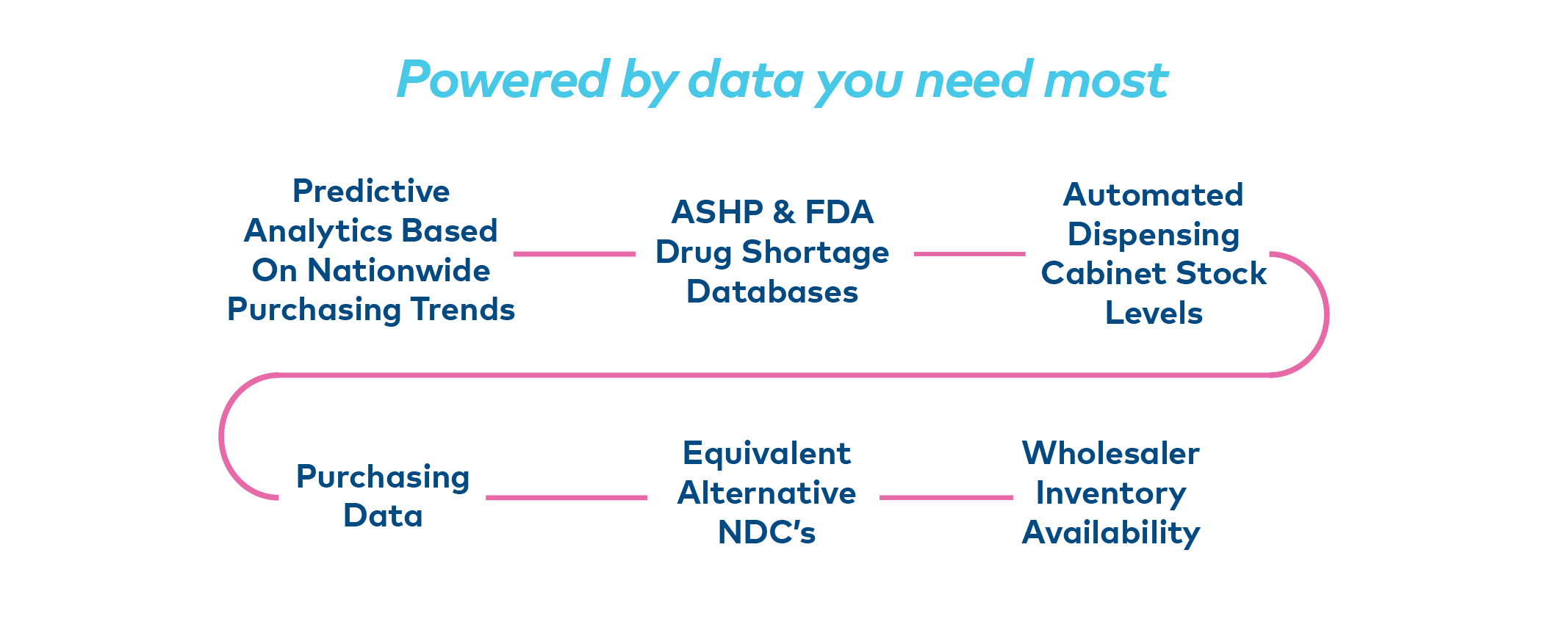The average hospital faces over 10 drug shortages at any given time, dedicating more than 11 hours each week to managing them. Based on data from the 2025 Hospital Pharmacy Operations Report (HPOR), this time commitment adds up to over 40 hours every month. To address drug shortage challenges – and other hurdles like budget constraints and workforce limitations, many hospitals are turning to purchasing analytics software to improve procurement processes, reduce costs, and improve efficiency for their entire team. Discover why integrating advanced analytics in your procurement strategy should be central to your pharmacy operations.

The Influence of Advanced Purchasing Analytics on Pharmacy Procurement
Purchasing analytics help pharmacies proactively address shortages using data-driven insights, ensuring minimal disruptions to patient care. It also identifies cost-saving opportunities and tracks spending patterns. With these insights, hospitals can optimize budgets and allocate resources more strategically. Here are four ways analytics empower pharmacies to streamline and optimize drug procurement processes.
1. Combatting Drug Shortages
Drug shortages are a costly procurement challenge for hospitals.
75% of HPOR survey respondents selected it as one of their top three challenges and most pressing concerns for the sixth year in a row. Health systems are increasingly turning to machine learning software to manage drug shortages more effectively. Instead of reacting to crises, they can now create proactive plans that identify risks early, improve operations, and save money.
Bluesight’s shortage solution uses predictive analytics to anticipate shortages before they happen, so you can have an operational plan in place preemptively. By analyzing nationwide purchasing trends—spanning over 40 million invoices and more than 2,500 hospitals—these tools provide critical insights into rising demand, usage patterns, and the most impactful shortages facing your organization. They also track inventory levels and estimate days-to-impact for each site.

With this advanced data, it’s now possible to prioritize high-impact shortages, streamline planning, and optimize sourcing—all within a single platform. Pharmacy teams that adopt these solutions can maintain uninterrupted patient care while reducing the risks associated with medication shortages.
2. Achieving Cost Management Goals
With rising drug costs and constrained budgets, effective cost management has become a top priority for many hospital executive teams. Procurement analytics software can analyze spending patterns, identify cost-saving opportunities, and support strategic decision-making.
Sentara Health, like many other hospitals, faced challenges in optimizing drug spend while reducing labor-intensive processes. Previously, their team relied on manual reviews of savings opportunities using a wholesaler analytics platform. After only one year of adopting CostCheck, Sentara achieved $3.45M in total savings and realized significant ongoing benefits. Read this case study to see the full impact on their procurement processes.
By using purchasing data analytics to optimize procurement strategies, hospitals can reduce expenses, improve formulary management, and negotiate better supplier contracts without compromising care quality.
3. Enhancing GPO and Contract Compliance
Purchasing analytics software facilitates GPO and contract compliance processes to be simplified and streamlined, making regulatory adherence more efficient than ever. Through a centralized GPO dashboard, hospitals using drug purchasing optimization solutions like CostCheck can track overall and line-item compliance in real-time while proactively monitoring compliance status and failure to supply credits. This prioritizes recommended changes, which quickly addresses compliance gaps and maximizes annual rebates.Hospitals can also uncover savings opportunities by monitoring 100% of contracts and invoices to spot misloads, mischarges, and price increases by integrating advanced purchasing solutions. This strategic approach improves operational efficiency, facilitates swift adaptation to regulatory changes, and helps hospitals prevent costly overpayments.
4. Improving Workflow Efficiency
Workforce shortages in healthcare continue to strain pharmacy operations, making efficiency a top priority. Procurement analytics platforms play a role in automating repetitive tasks like inventory tracking and spend analysis, reducing administrative burdens on staff.
According to the 2025 HPOR, 75% of respondents reported purchasing from four to nine different sources, underscoring the need for more streamlined purchasing workflows.
In response, the adoption of purchasing optimization technology has grown significantly—44% of respondents now use purchasing analytics software, a 76% increase from last year. Pharmacy teams can simplify workflows and reduce redundancies with all-in-one solutions. For example, the Sentara case study highlights how CostCheck requires a minimal time commitment of only 30 minutes a week to manage, which allows staff to centralize operations and dedicate more time to strategic priorities. Even with budget and workforce challenges, hospitals can achieve greater efficiency using innovative procurement tools like this.
Pharmacy Procurement Operations Built for the Future
The integration of hospital purchasing software represents a pivotal shift from reactive to proactive procurement management in hospital pharmacy operations. By adopting advanced procurement solutions with purchasing analytics, healthcare organizations can address today’s procurement challenges while preparing for future demands. These solutions deliver efficiencies, uphold compliance, and unlock cost savings, making them an investment for forward-thinking pharmacy leaders. Read the full 2025 Hospital Pharmacy Operations Report to explore the challenges hospitals are currently navigating, and learn how your organization can harness purchasing data analytics to improve operational efficiency, focus on patient outcomes, and future-proof your pharmacy operations.



